#warriors x’ian
Text
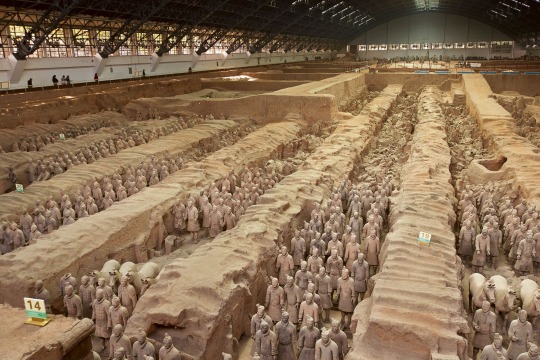
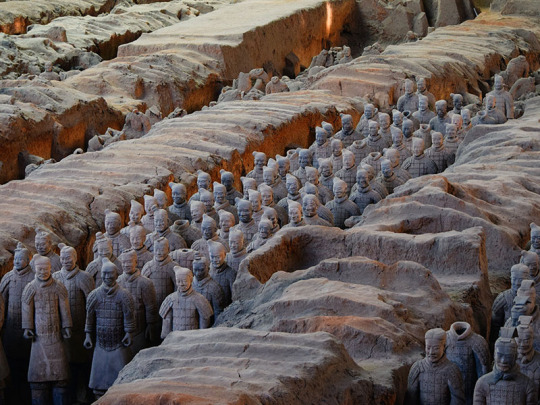
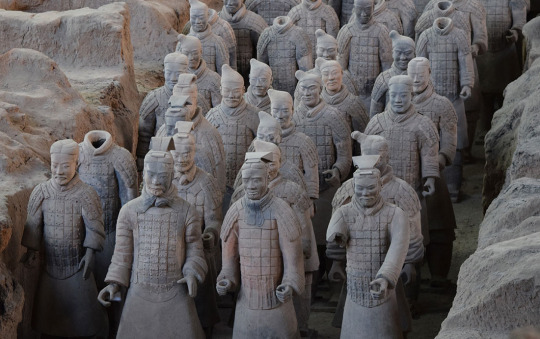

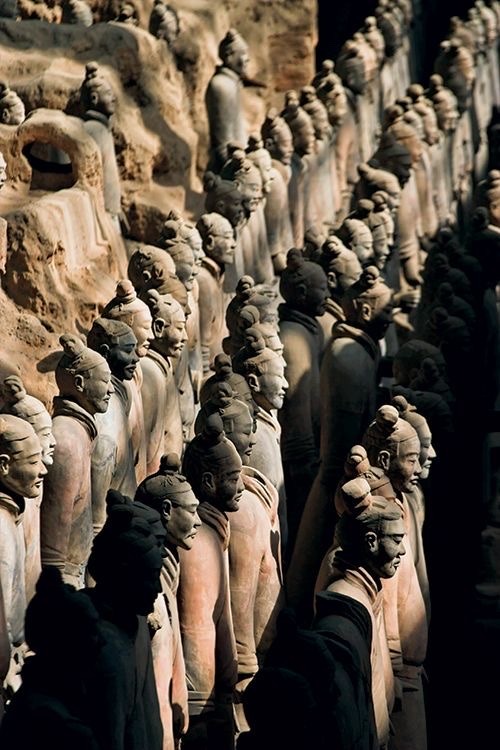
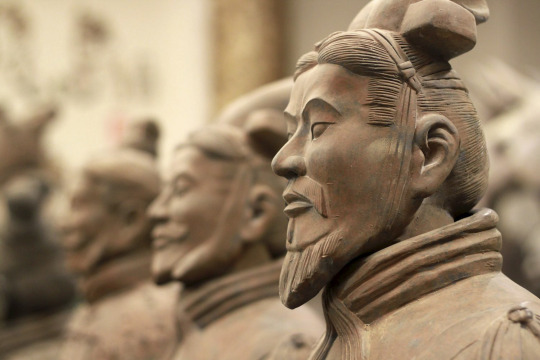
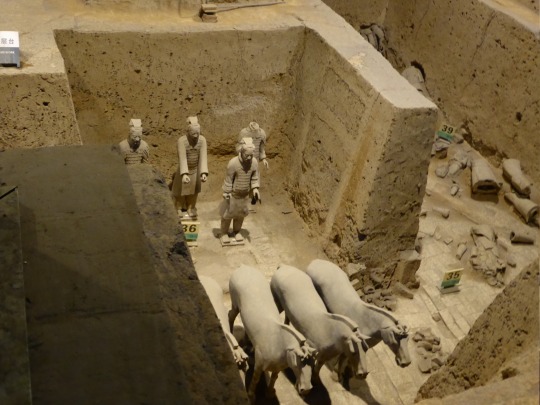

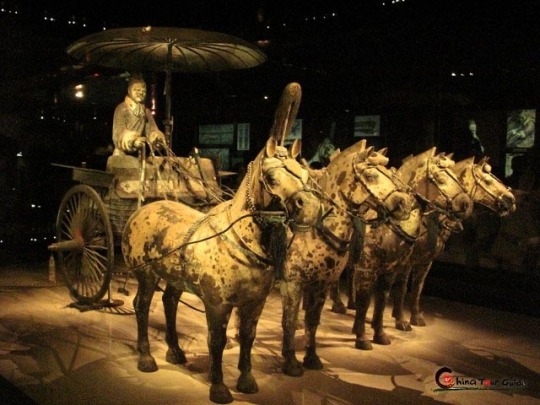
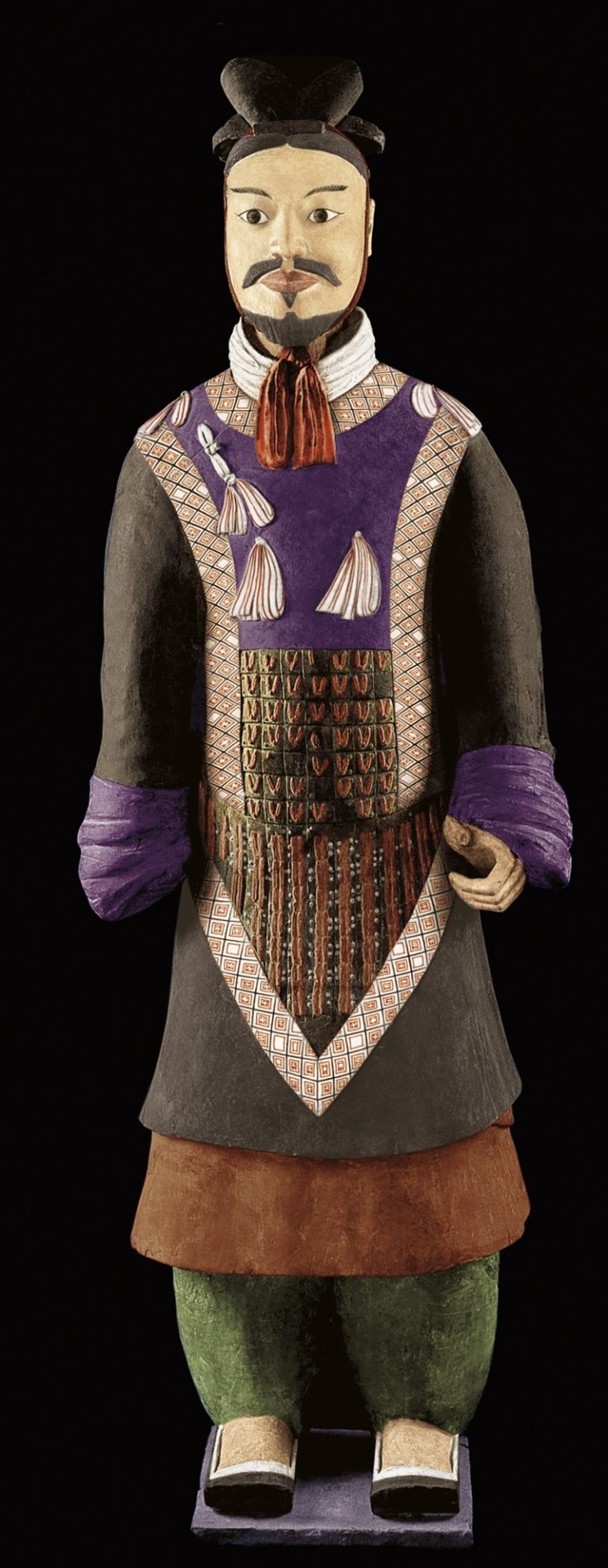
On March 29, 1974, a peasant while digging a well to obtain water, discovered one of the most extraordinary archaeological finds: the Terracotta Warriors of Xi'an, China. These figures were built between 246 and 206 B.C. to protect the tomb of Emperor Qin Shi Huang, the unifier of China and its first emperor. In all, more than 8,000 statues of soldiers, a cavalry of 150 animals, 130 chariots drawn by bulls, 520 horses and up to 40,000 arrowheads have been discovered along with dozens of bronze swords, spears, crossbows and other weapons. And more figures continue to be discovered. They are all uniformed according to their military rank and colored. And as a curious fact, no soldier has the same face.
440 notes
·
View notes
Text
China, 2018

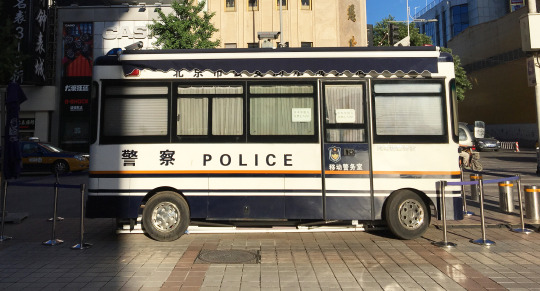





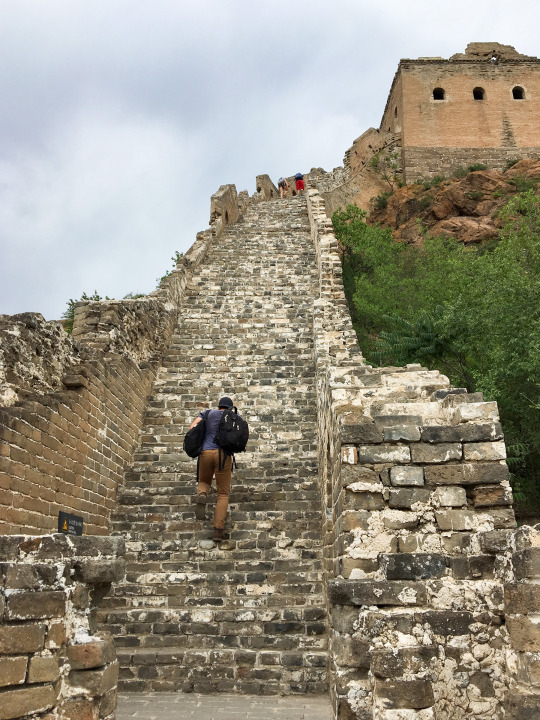
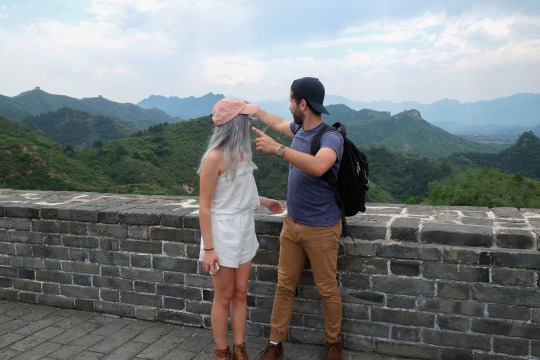




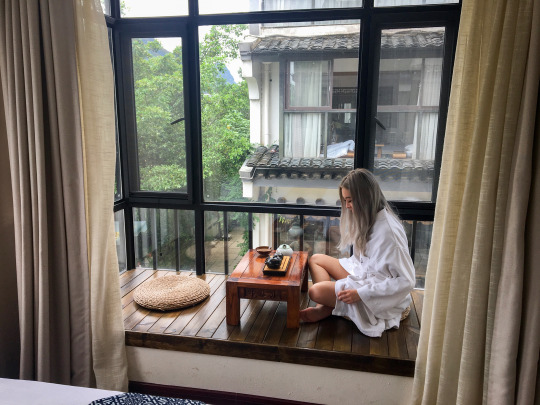

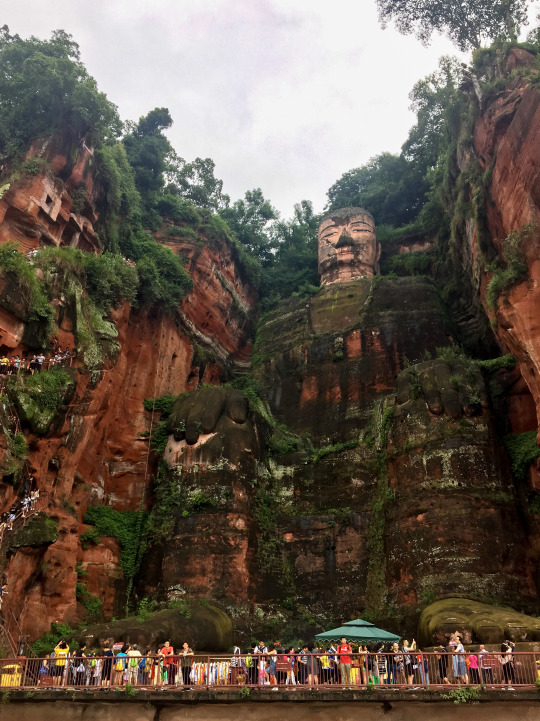
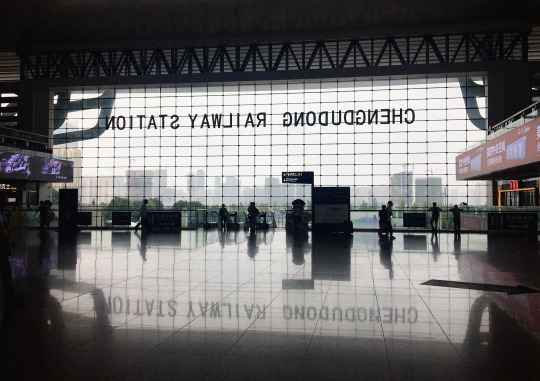

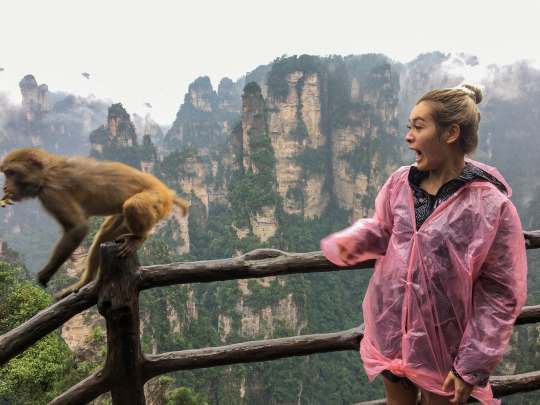



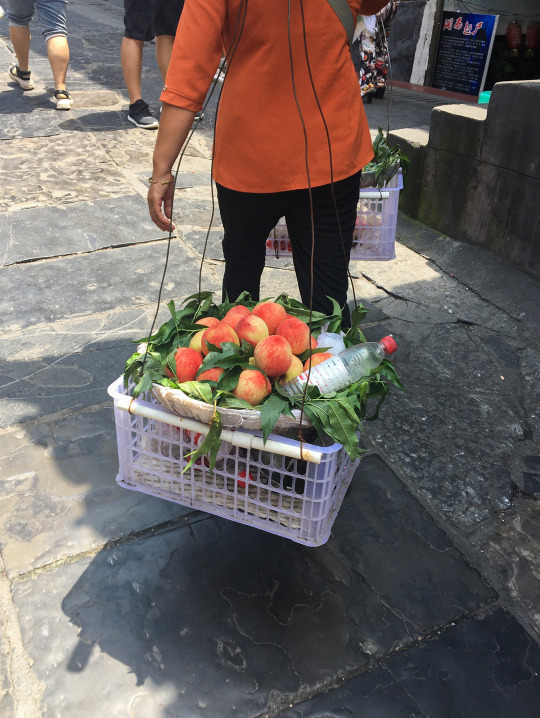

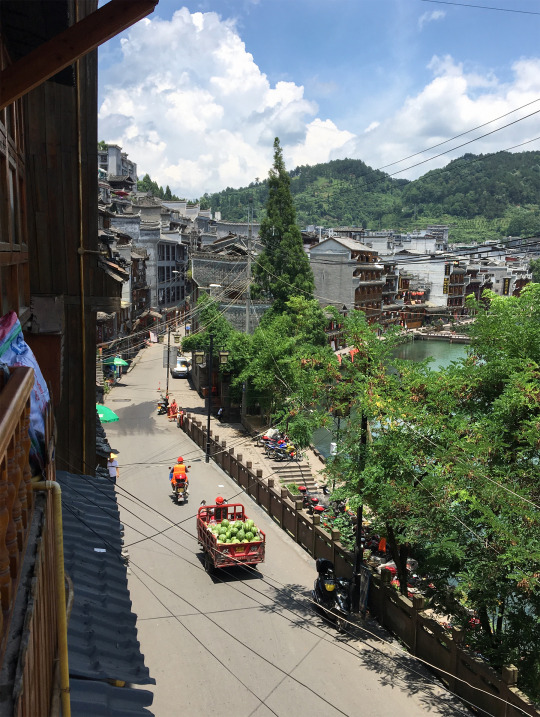

China, 2018
Beijing, X’ian, Chengdu, Guilin, Fenghuang, Zhangjiajie
China was.. unexpected. Full of luscious greenery and mountains that I had never witnessed before. We hiked a section of the Great Wall (my mum actually asked if we had hiked the entire thing.. no mum, that would take me 18 months..), heard about the Terracotta Warriors and witnessed where they had been buried and how the archaeologists were putting them back together, accidentally hit a monkey, saw larger than life Buddhas, ate street food at the night markets, rode bikes in the village and countryside and got trapped in torrential rain, and hiked amongst the clouds atop floating mountains.
1 note
·
View note
Text
X'ian, city of 13 million people and home of China's famous terracotta warriors, locked down as COVID cases spike
X’ian, city of 13 million people and home of China’s famous terracotta warriors, locked down as COVID cases spike
China has locked down about 13 million people in neighbourhoods and workplaces in the northern city of Xi’an, which is famous for its terracotta warriors.
The move follows a spike in COVID-19 cases, which has set off panic buying just weeks before the country hosts the Winter Olympic Games.
State media reported that city officials on Wednesday ordered all residents to stay home unless they had a…

View On WordPress
0 notes
Text
Xi’an, China
Day 56 - Beijing to X’ian
We boarded our sleeper train at Beijing West Station in the evening - beginning our 16 hour journey to Xi’an, over a thousand kilometres Southwest of Beijing. The language barrier made for quite a challenge - with Christie and I running all over the massive station, trying to figure out how to collect our tickets. I later found out that Beijing West Station is the largest train station in all of Asia, typically serving over 150,000 passengers per day.
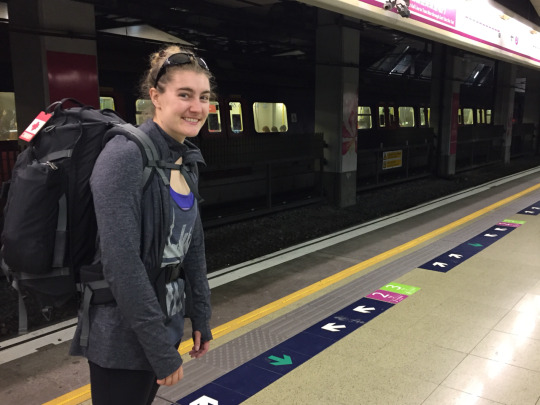
Finally found our platform!!
Fortunately, after a few days of being in China, we had quickly learned to give ourselves lots of extra time with any form of transportation! Having collected our tickets, we joined the throngs of people in the waiting area. Packed into every available chair and inch of floor space, many passengers were travelling with big cardboard boxes and stuffed rice bags. Loud announcements in Mandarin blared from overhead speakers, updating travellers on the constant stream of trains coming and going from the station.
Our sleeper compartment was shared with two other friendly Chinese women. Although we were unable to directly communicate with each other - between Google translate and a similar Chinese app, we were able to exchange a few simple pleasantries and smiles. The small bunks were quite basic, but comfortable enough for our long overnight journey. We secured our passports and valuables in our bags with a bicycle lock, settling down for the night as our train chugged South out of Beijing.
Day 57 - Xi’an
Arriving in Xi’an station mid morning, we walked to our hostel in the middle of the walled city centre. The city of Xi’an is one of the most ancient in China, steeped with thousands of years of Chinese history. Many early royal dynasties called Xi’an home, along with the first Emperor Qin Shi Hueng, who unified China over 2000 years ago by conquering states throughout the region.
In addition to being a capital of ancient civilization, Xi’an was also the terminus of the Silk Road trade route. Because of this important location in ancient trade, Xi’an has evolved over time as a city with an incredible mix of people, religion and culture. These influences continue to be reflected to this day in everything from the vibrant Muslim minority, to the fusion of Chinese and Western architecture seen throughout the city.
As we made our way through the historic city centre, we immediately noticed the poor air quality. Although warmer than Beijing, the winter season in Xi’an is known for the heavy blanket of smog that hangs over the city. Looking through the window of our hostel room, the city skyline was scarcely visible beyond a few blocks, hidden in the thick haze. I have never before experienced smog to the extent we saw in Xi’an, and throughout our entire stay in the city, we barely saw the sun.
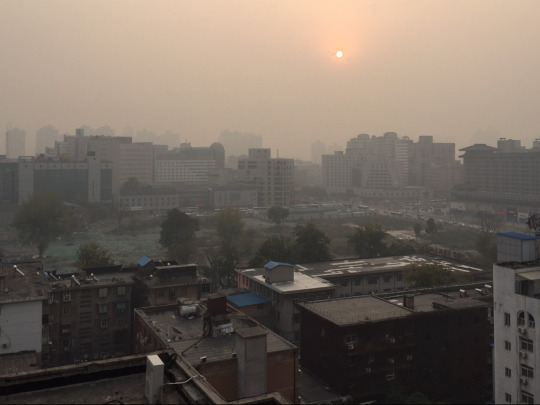
Thick Smog over Xi’an
Dropping off our bags, we set out to explore the city. Our hostel was located in a wholesale/market neighbourhood of the city, with delicious coffee shops scattered throughout wholesale stores. (For the record, the coffee throughout China was consistently fantastic!) Walking along the narrow sidewalks crammed with scooters and bicycles, we passed wholesale vendors selling everything from engine parts, cookware and beauty products. At the end of our block, we were immediately greeted by the strong, unmistakeable smell of a fresh fish market, with every type of seafood imaginable on display in the open air.
In the centre of historic Xi’an, we traversed a chaotic, multi-lane roundabout to visit the ancient Bell Tower. Over 600 years old and built in the Ming Dynasty, the tower was named for the 6.5 ton bell within, which historically was rung to tell time or to raise an alarm in the ancient city. The classical Ming architecture in the tower was reminiscent of the Forbidden City, with green-tiled eaves and red decorative lanterns.
After a few failed attempts to find lunch (complete with one instance of being ignored at a restaurant!), we tucked into a steaming basket of dumplings and bowl of spicy noodles. Continuing our exploration in the afternoon, we wandered towards the Muslim Quarter. Turning a corner, we were met with an immediate assault on the senses - scooters whizzing through crowds of people on Bienyuanmen Muslim Street, with hundreds of handmade food stalls lining the bustling sidewalks.
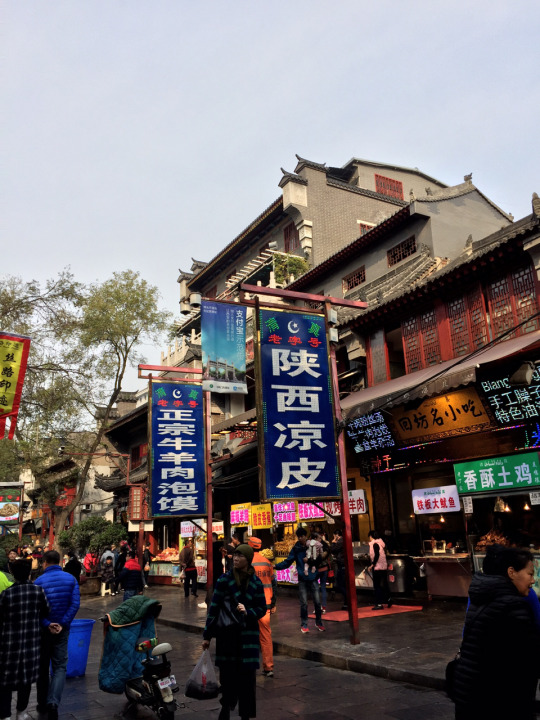
Market in Xi’an’s Muslim Quarter
The food market in the Muslim Quarter was unlike any I had ever seen before. Carcasses of various animals were hung along the street, with the meat stripped down to the bone. In China, almost every part of an animal can be used in cooking - which we saw throughout the market, with lungs, liver and heart displayed for sale. The smell of roasting walnuts, scooter exhaust and pungent jackfruit filled the cold air. Walking amongst the stalls, every imaginable food could be purchased, from deep fried potato spirals, blocks of spiced tofu, freshly squeezed pomegranate juice, and persimmon donuts. Chinese Muslim men behind stalls wore white caps, with women covering their head with beaded headscarves.
We continue along a series of side streets to find hundreds of other products on sale, from spices to pearls. We were quickly on the receiving end of some fairly intense sales pitches and bartering, in one case a vendor grabbing at our clothes as we tried to quickly walk away. Needing a break from the chaos of the Muslim Quarter, Christie and I retreated to the nearby Great Mosque of Xi’an. A complete juxtaposition to the commotion of the nearby streets, the peaceful grounds of the walled complex provided us with a welcome quiet moment. Built in the Ming Dynasty, the Mosque mixes traditional Chinese architecture with Islamic designs seen in the Middle East. Lush gardens were framed by ornate wooden archways, separating a series of beautifully manicured courtyards.

Christie wandering through the grounds of Xi’an’s Mosque
Gathering our energy over another coffee (the fatigue from riding the overnight train kicking in around now!), we headed to the South Gate of the city to walk around the Xi’an City Wall. Running alongside a moat, this impressive wall circles the historic city centre, running for 13.7 kilometres. At 12 metres tall and 18 metres wide, the wall was built to protect Xi’an from invasion, and is among the largest defensive military systems of the ancient world. As the daylight fell, Christie and I wandered along the top of the South wall as the red lanterns were lit. From our vantage point, we could see both the ancient and modern sides of the city as we walked back to our hostel for the night.
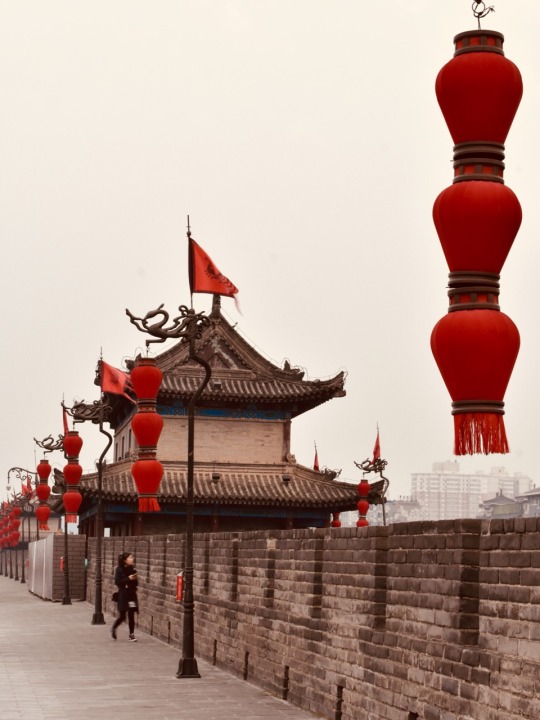
Lanterns along the city wall surrounding Xi’an’s historic centre
Day 58 - Xi’an and Terracotta Army
Christie and I woke early and headed out to visit the Terracotta Warriors, located about 40 kilometres East of Xi’an. The Terracotta Warriors (or “Army”) were only discovered in 1974 when farmers were digging a well, and is considered to be one of the most famous archeological discoveries in modern history. The Terracotta Army is estimated to have been constructed around 200 BC, and is made up of thousands of life-sized clay warriors. This Army was built to provide protection and military power for the first Emperor Qin Shi Hueng in the afterlife, and represents the soldiers he commanded during the wars that unified China. The Terracotta Warriors, which include an infantry, and cavalry, were buried near the tomb of the Emperor.
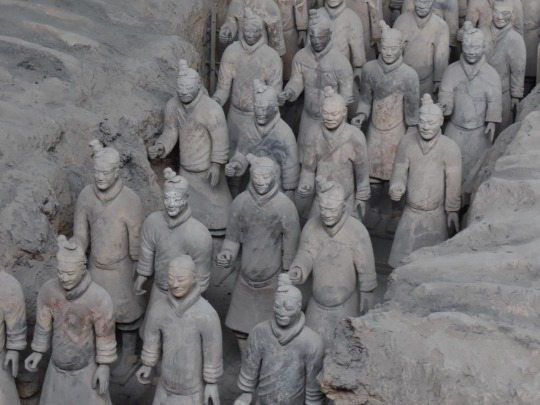
Terracotta Warriors in Pit 1 - the largest excavation site
It was freezing cold outside as we began our visit to the Terracotta Warriors. The site has three separate excavation pits, with several ongoing digs in progress. The largest pit is the size of an airport hanger, with row upon row of life-sized terracotta models. These warriors would have once been brightly painted, but after thousands of years in the ground, all colour has worn away. As I took in the impressive rows of ancient warriors, I gradually began to notice variations in their uniform, hairstyle, and posture. These small differences indicate the rank of the soldiers: from generals, to archers and charioteers. In another pit, there were also life-sized terracotta horses.
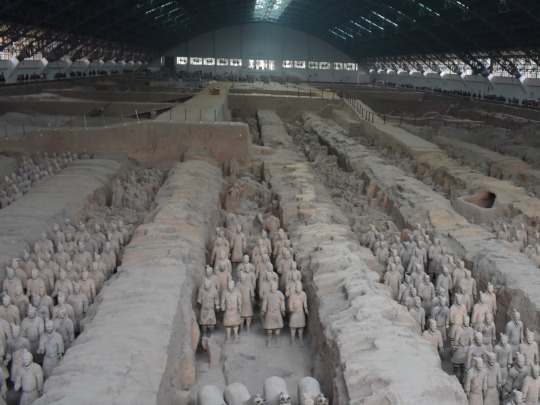
The main excavation site is the size of an airplane hanger, and growing.
After visiting the excavation site, we continued onwards to see the mausoleum of the first Emperor. This tomb has not yet been excavated, and there is little more to see than a massive pyramid of earth in the distance. Archeologists suspect that within this mausoleum there may be further life-sized models to protect the emperor, along with a replica of the ancient city of Xi’an. It is also believed that in addition to the clay figures, thousands of real people were buried alongside the emperor - from concubines to craftsman who built the mausoleum. All of these people were intended to follow the emperor into the afterlife. There are many stories and ancient texts describing the wealth and riches buried within the tomb, as well as descriptions of booby traps to guard against robbers.
Unfortunately, Christie became very sick enroute to the site, so our visit to the Terracotta Warriors ended up being quite brief. (Christie jokingly asked me to call this post “Christie learns what Immodium does and has hallucinations about going on a spirit quest”). It was a pretty rough day for her, and she ended up going to sleep immediately after our return to Xi’an.
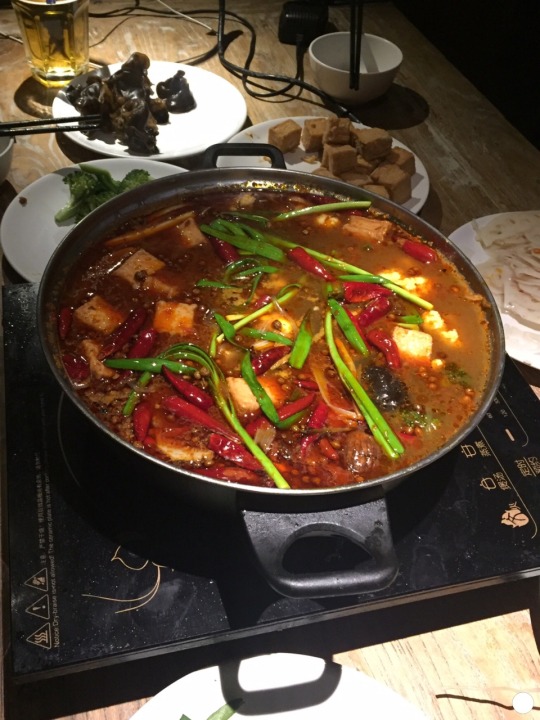
Traditional Chinese Hot Pot
After making sure that Christie was resting and had everything she needed, I joined our British roommates for homemade Chinese hot pot. This delicious dish is made by cooking a variety of vegetables, tofu, noodles and spices in a boiling broth on the table in front of us. I had a few beers with a jovial group of Brits, including one very impressive guy who had cycled all the way from England to China!
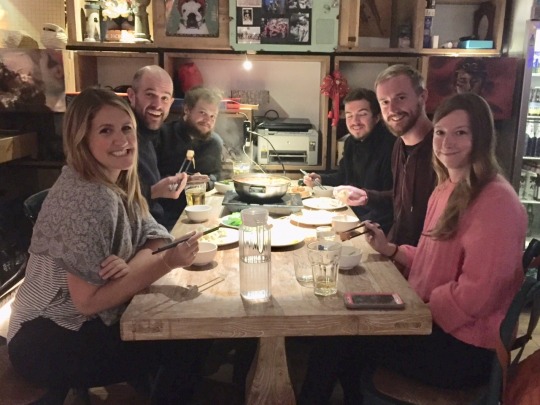
Hotspot dinner with the Brits!
After dinner, we decided to take out Mobi-bikes (one of the countless bike-share programs in the city), to cycle across Xi’an to a bar tucked away near the South Wall. Biking through Chinese traffic, including through massive roundabouts, was equally exhilarating and terrifying - an experience in and of itself, given that so many Xi’an residents get around town this way.
The hidden underground bar, though not visible from the street, was packed with a combination of Chinese locals and a few foreigners, listening to live music, dancing and playing table games. I had a great time, and really enjoyed seeing what a night out in China was like!
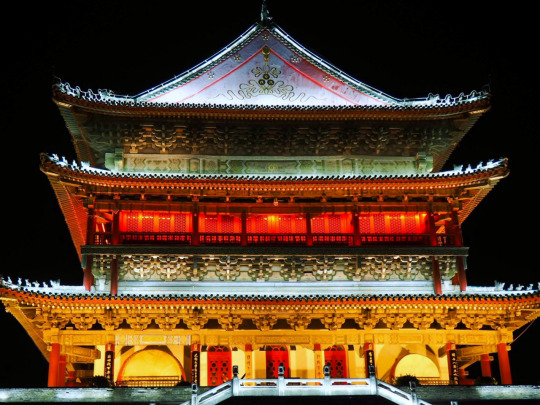
Xi’an’s Bell tower at night
1 note
·
View note
Text
If you are in X’ian to visit the Terracotta Warriors, then make sure you take some time out to visit the Big Wild Goose Pagoda in Xi’an. The city has been regarded as the official start point of the Silk Road and is well worth a visit in its own right.

The Big Wild Goose Pagoda is a popular tourist attraction, which is a 7th century Buddhist Pagoda located in Xi’an, China. Built in the Tang Dynasty and originally had five stories and later the structure was rebuilt during the the Ming Dynasty. One of the Pagoda’s many functions was to hold Sutras and Figurines of the Buddha which were were brought to China from India by Xuanzang, the famous Buddhist translator and traveler. This Pagoda is having beautiful Statues of Buddha, his life and also the depicted travel stories of Xuanzang.
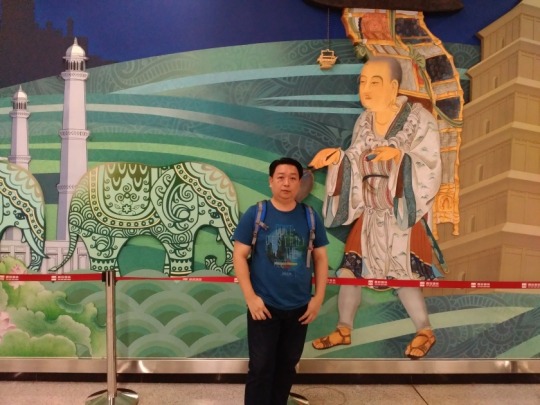
The Pagoda is located at the southern part of the city and can be reached either by Bus or by Metro (Dayanta Station).
Beautiful Pagoda, big area and many seats to enjoy the peaceful atmosphere.
It’s a nice park to walk around, there are many sculptures around the park and lots of snack sellers as well as children toys. The toilet inside the park is really clean and nice. Really handy when you have young kids who need to go toilet every so often!

There’s a big water fountain area in the big park. If you are going to visit the Big Wild Goose Pagoda, we would highly recommend doing so at night. The Great Musical Fountain and Light show are amazing and begins right at 8.30pm daily.

Well worth making the trip as the show, that lasts a good 20 minutes, is actually pretty good. The fountains danced to classical music and some traditional Chinese singing.
The entrance to the Daci’en Temple is 50 RMB for adult. Additional fee 30 RMB required to the Big Wild Goose Pagoda entrance itself. We came late afternoon and thought there’ll be not ranking time to visit inside the pagoda so only took the entrance fee.
The complex has several buildings with different statutes of Buddha and others. The feeling is very serene. People will be worshiping at the site, so you should make sure that those in your party are aware that this is a place of worship and act respectfully. If you want to get a sense for the influence of Buddhism on China, you won’t want to miss this working temple site.
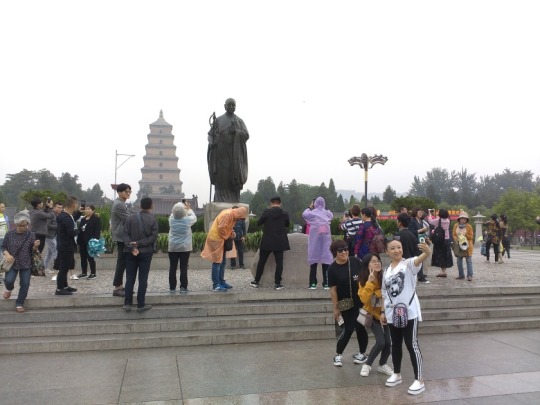
We also visited the Xuanzang Memorial Hall located just behind the pagoda. The hall was built in honour of Xuanzang, which we could find a bronze statue of him, as well as many stone and wood carvings on display.
Classical Buildings & Sculptures, Ci’en Road (Opposite Bronze Statue Xuanzang)
Transportation to Big Wild Goose Pagoda
By Bus:
Take bus 5, 19, 21, 22, 23, 24, 27, 30, 34, 41, 44, 224, 242, 271, 307, 400, 401, 408, 500, 521, 526, 527, 601, 606, 609, 701, Qujiang Tourist Bus, Huan Shan Tour Bus 1 & 2, Tourist Bus Line 6 & 8 & 9 and get off at Dayanta (Big Wild Goose Pagoda) Station.
By Metro:
Take Metro Line 3 to Dayanta Station directly.
Take Metro Line 2 to Xiaozhai Station (Exit C) and walk eastward for 10 minutes.
By Taxi:
It costs about CNY 30 from the Xian Railway Station to this scenic area.
Ticket Price
Ticket Price: Da Ci’en Temple: 50 RMB
Pagoda: 30 RMB
Note: Those who want to ascend the pagoda should buy the entrance ticket of Da Ci’en Temple as well. Opening Hours: 8:00 – 17:00
Musical Fountain on the North Square:
Admission Fee Free Timetable Jun. 10 – Oct. 5 Mon., Wed. – Fri.: 12:00, 21:00 Tue.:21:00 Feb. – Jun. 9; Oct. 6 – Oct. 31 Mon., Wed. – Fri.: 12:00, 20:30 Tue.:20:30 Note:
1. Extra performances in weekends and holidays are at 14:00, 16:00 and 18:00;
2. No show from Nov. to Jan., expect the Chinese New Year Holiday
Big Wild Goose Pagoda, Xi’an If you are in X'ian to visit the Terracotta Warriors, then make sure you take some time out to visit the Big Wild Goose Pagoda in Xi'an.
0 notes